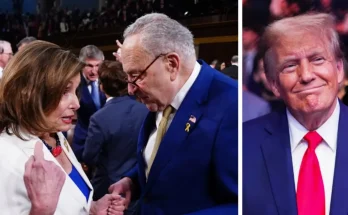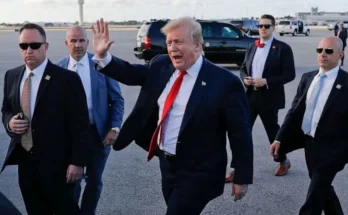A Giant Falls: The End of an Era That Defined Generations
The wrestling world awoke to devastating news that sent shockwaves through sports entertainment and beyond. A towering figure who once commanded millions to say their prayers and eat their vitamins has taken his final bow, leaving behind a legacy that transcended the squared circle and forever changed the landscape of American popular culture. The larger-than-life persona that captivated audiences across decades has now become part of wrestling folklore, marking the end of a truly unprecedented chapter in sports entertainment history.
The Final Bell Tolls
Wrestling legend Hulk Hogan has died at the age of 71, his family have confirmed to US Weekly. The news has sent shockwaves throughout the wrestling community and beyond, as fans worldwide grapple with the loss of one of the most recognizable figures in sports entertainment history.
TMZ is reporting Hogan suffered a cardiac arrest at his home in Clearwater, Florida, with medics dispatched to the 71-year-old WWE icon’s home early Thursday morning. Emergency responders were dispatched to his Clearwater, Florida home early Thursday morning after a reported cardiac arrest, marking a tragic end to a life that had survived countless battles both inside and outside the wrestling ring.
The circumstances surrounding his death paint a picture of a man who had been quietly battling health issues in recent months. US Weekly detailed in a report published last month that Hogan was recovering from a major operation on his heart, suggesting that his health struggles had been ongoing and serious.
“Hulk had pretty serious heart surgery a few weeks ago and was doing well afterward,” a source close to the wrestler told the outlet. This revelation adds context to the tragic events of Thursday morning, indicating that despite medical intervention, Hogan’s health challenges ultimately proved insurmountable.
A Legacy Carved in Stone
Hogan is largely regarded as one of the most recognizable figures in the whole of WWE, and today’s news is devastating to millions of his fans across the world. His impact on professional wrestling cannot be overstated – he was the central figure who helped transform wrestling from a regional entertainment into a global phenomenon that captured the imagination of millions.
Born Terry Gene Bollea on August 11, 1953, in Augusta, Georgia, the man who would become known as Hulk Hogan grew up in Tampa, Florida. Before stepping into the ring, he played in local bands, but his true breakthrough came in the early 1980s when he joined Vince McMahon’s World Wrestling Federation (WWF, now WWE).
The transformation from Terry Bollea to Hulk Hogan represented more than just a name change – it was the birth of a character that would define an entire era of sports entertainment. With his distinctive yellow and red attire, flowing blonde mustache, and catchphrases like “Whatcha gonna do when Hulkamania runs wild on you?” Hogan became the archetypal American hero that audiences desperately wanted to believe in.
The Golden Era of Hulkamania
The 1980s represented the pinnacle of Hogan’s influence, a period when “Hulkamania” swept across America and beyond. Hulk transformed professional wrestling into a family entertainment sport. Before Hulk, wrestling catered to a fairly narrow audience. His appeal transcended traditional wrestling demographics, attracting children, families, and mainstream audiences who had never shown interest in sports entertainment before.
Hogan’s matches became cultural events, with WrestleMania I in 1985 featuring him alongside Mr. T and Cyndi Lauper, demonstrating wrestling’s crossover appeal into mainstream entertainment. His feuds with wrestlers like “Rowdy” Roddy Piper, André the Giant, and “Macho Man” Randy Savage became the stuff of legend, creating storylines that captivated audiences and established wrestling as must-see television.
The Hogan character represented the quintessential American hero – a larger-than-life figure who preached the values of hard work, dedication, and standing up for what’s right. His pre-match ritual of cupping his ear to the crowd, flexing his massive biceps, and tearing off his shirt became iconic moments that defined not just wrestling, but 1980s popular culture.
Beyond the Wrestling Ring
Outside of his professional wrestling career, Hogan appeared in films including Rocky III, Gremlins 2: The New Batch, Mr. Nanny, and more. His role as Thunderlips in “Rocky III” (1982) marked his entry into Hollywood and demonstrated his natural charisma and screen presence.
The success of his wrestling persona opened doors to a film career that, while not always critically acclaimed, proved his drawing power at the box office. Movies like “No Holds Barred” (1989), “Suburban Commando” (1991), and “Mr. Nanny” (1993) capitalized on his wrestling fame and allowed him to reach even broader audiences.
Perhaps even more significantly, Hogan’s venture into television with the VH1 reality show “Hogan Knows Best” provided audiences with an intimate look at his family life. The show, which aired from 2005 to 2007, featured Hogan with his then-wife Linda and their children Nick and Brooke, revealing a more personal side of the wrestling superstar.



